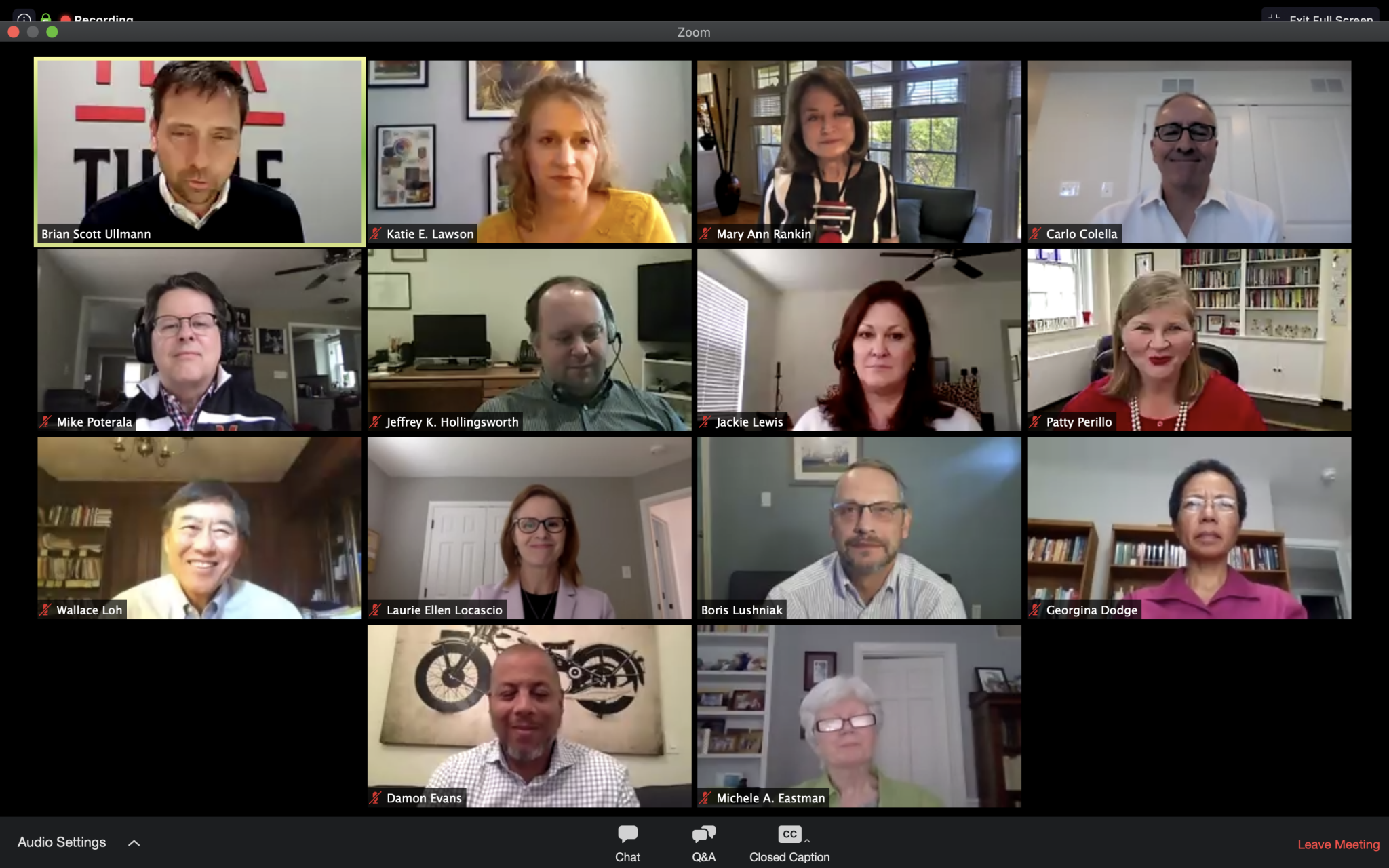University of Maryland President Wallace Loh and other administrators laid out a tentative vision of what returning to campus this fall could look like for students and faculty amid the coronavirus pandemic at a virtual town hall Tuesday afternoon.
While the university has yet to decide when — and to what extent — the campus can reopen, a return could include COVID-19 testing on campus, mask-wearing and contact tracing efforts, administrators said, as they answered questions submitted from the almost 3,000 university community members who tuned in.
Though a handful of other public universities have announced that they will bring students back this fall, Loh pointed out that most included caveats depending on state and public health requirements.
“That’s exactly what we’re doing,” he said. “The only difference is, we did not jump the gun.”
University leaders emphasized the fluidity of the situation, with Boris Lushniak, public health school dean, citing potential on-campus testing as key to a safe return.
“We’re trying to catch up,” Lushniak said. “The world is changing almost by the day in terms of what tools we may have to make important decisions for the good of our students, faculty and staff.”
To accommodate social distancing requirements in the event of a return, classes held in large lecture halls may be moved to larger venues both on and off-campus — like The Hotel — and lecturers may be pushed to embrace online or blended-learning options, student affairs vice president Patty Perillo said.
[Read more: President Loh on COVID-19: “The world is not going to go back to the way it has been”]
Students would only be allowed back into dorms if appropriate measures could be taken to limit potential transmission and maintain safety recommendations, Perillo said. However, students who left belongings in dorms when they left campus in March will hopefully be able to return to retrieve them after final exams and commencement are over, Perillo said.
“We look forward to your return, because you will return,” Perillo said. “And to those graduating seniors, this will always be a home that you can come back to.”
While the university allowed all students to take their classes pass/fail this spring semester — with the option to opt into letter grades or drop classes as late as May 12 — students will see a return to letter grades this summer, to provide a more “adequate record,” provost Mary Ann Rankin said.
Rankin hopes to prepare faculty this summer to deliver better-designed online or blended instruction in the fall.
“[Pass/fail is] a reasonable emergency measure to get us through the end of the semester, but it’s not a long-term solution for grades,” she said. “I think people will find that letter grading is less onerous, more like a normal situation, as we go into the fall.”
Some community members also expressed concern about having to pick between pass/fail and letter grades before finals are over. But because the university’s student information system was created in the 1980s, its limited capacities can’t process final grades in time if the change is made after finals, information technology vice president Jeffrey Hollingsworth said.
[Read more: UMD to hold the first round of summer classes online]
“It took a near-heroic effort to create this opportunity to select up through the last day of class and make that available,” Hollingsworth said.
Perillo and other administrators encouraged students and faculty to take advantage of resources still available virtually, such as teletherapy offered by the Counseling Center or livestreamed fitness classes offered by University Recreation and Wellness. The Student Crisis Fund has also allocated over $750,000 to more than 1,500 students in need so far.
Lushniak urged the university community to be optimistic — while the pandemic is still in early stages, scientists have risen to meet the virus with ongoing research into its transmission, as well as potential treatments and vaccines.
He also warned people about increased rates of substance abuse and advised individuals to use the opportunity to learn something new, take up a hobby and be vulnerable with one another.
“Live life to the ultimate,” Lushniak said. “Us having this COVID-19 can be a blessing.”
Loh emphasized that while many are eager to return to normal, he discourages the university from returning to the status quo. The pandemic had brought to light the advantages of telework and online instruction and the tools that could continue into a “post-pandemic world.”
“I cannot predict what’s going to happen next fall. I don’t know that anyone can,” he said. “A crisis of this magnitude is, in its way, a harbinger of the future.”
Staff writer Lyna Bentahar contributed to this report.



